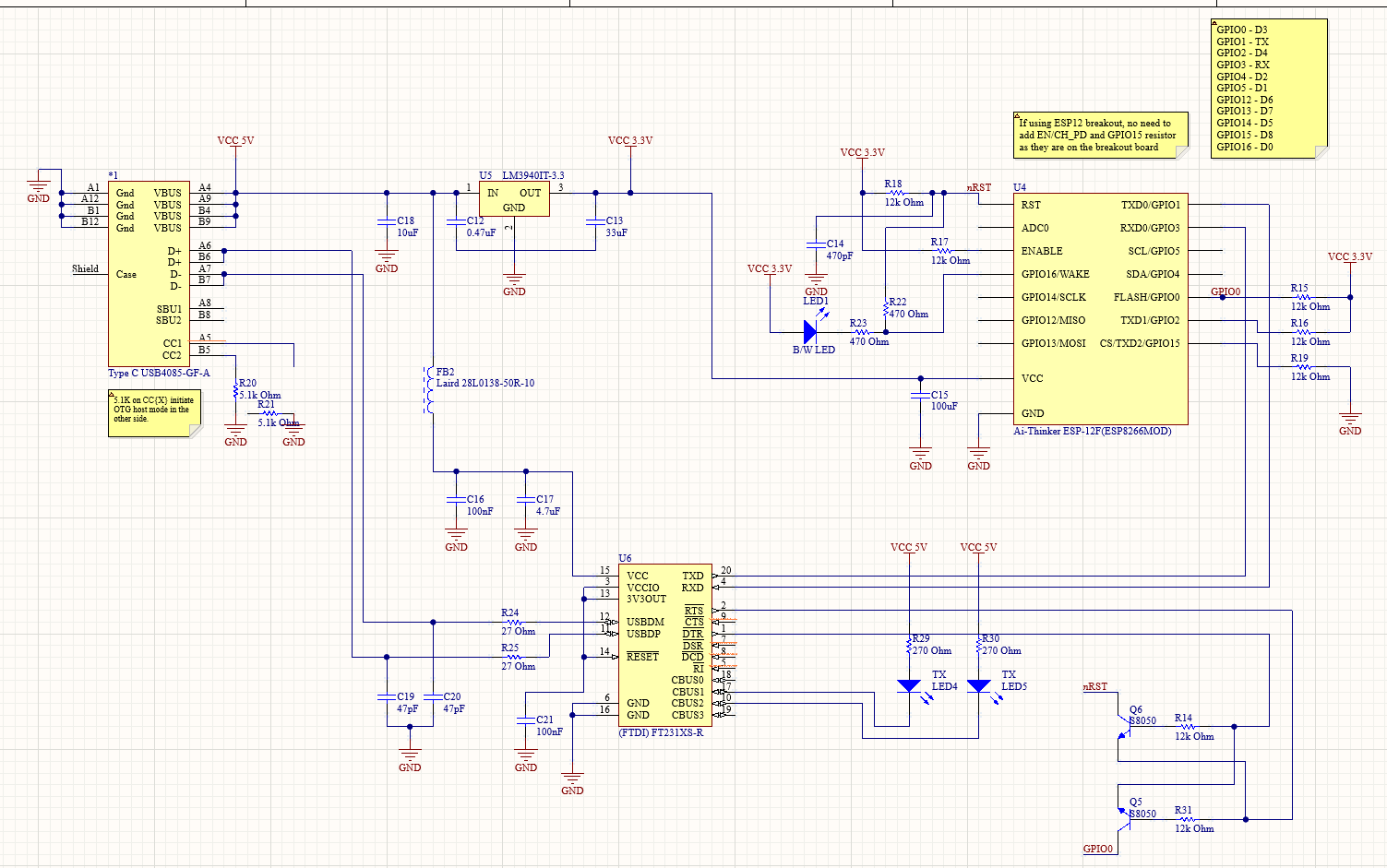I've challenged myself to make a custom ESP8266 (ESP12S) board. I'm having a problem I cannot decipher: The PC sees the USB device, and I can successfully upload my code through the Arduino IDE, but after the upload it does nothing. Uploaded blink and nothing happens.
I'm using a LM3940 to get my 3V3 and a FT231X for the UART.
I've put this schematic together on a breadboard, breakouts for the ESP & UART. I checked the voltage across the ESP's Vcc & Gnd: while uploading it is 3V3, afterward it drops to ~2V.
Is there an obvious fault here? Or is breadbording this just not good enough?
My suspicion is that this is a power delivery issue, so I swapped to a TPS63051 but the PC did not even recognize the device with that in place. Got 1V between the ESP Vcc & Gnd. I imagine that part really does not like to be on a breadboard, without any load it was producing 3V3 no problem.


